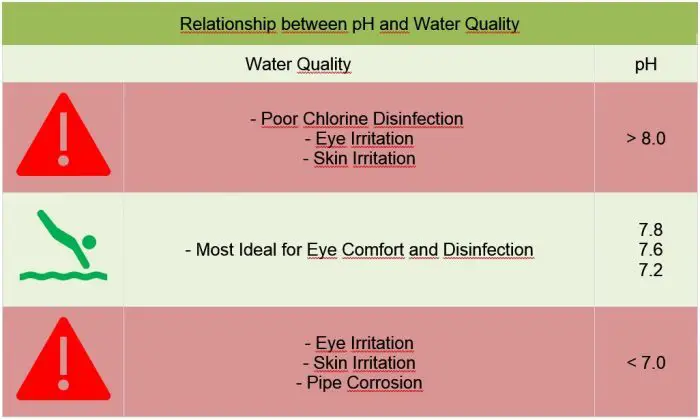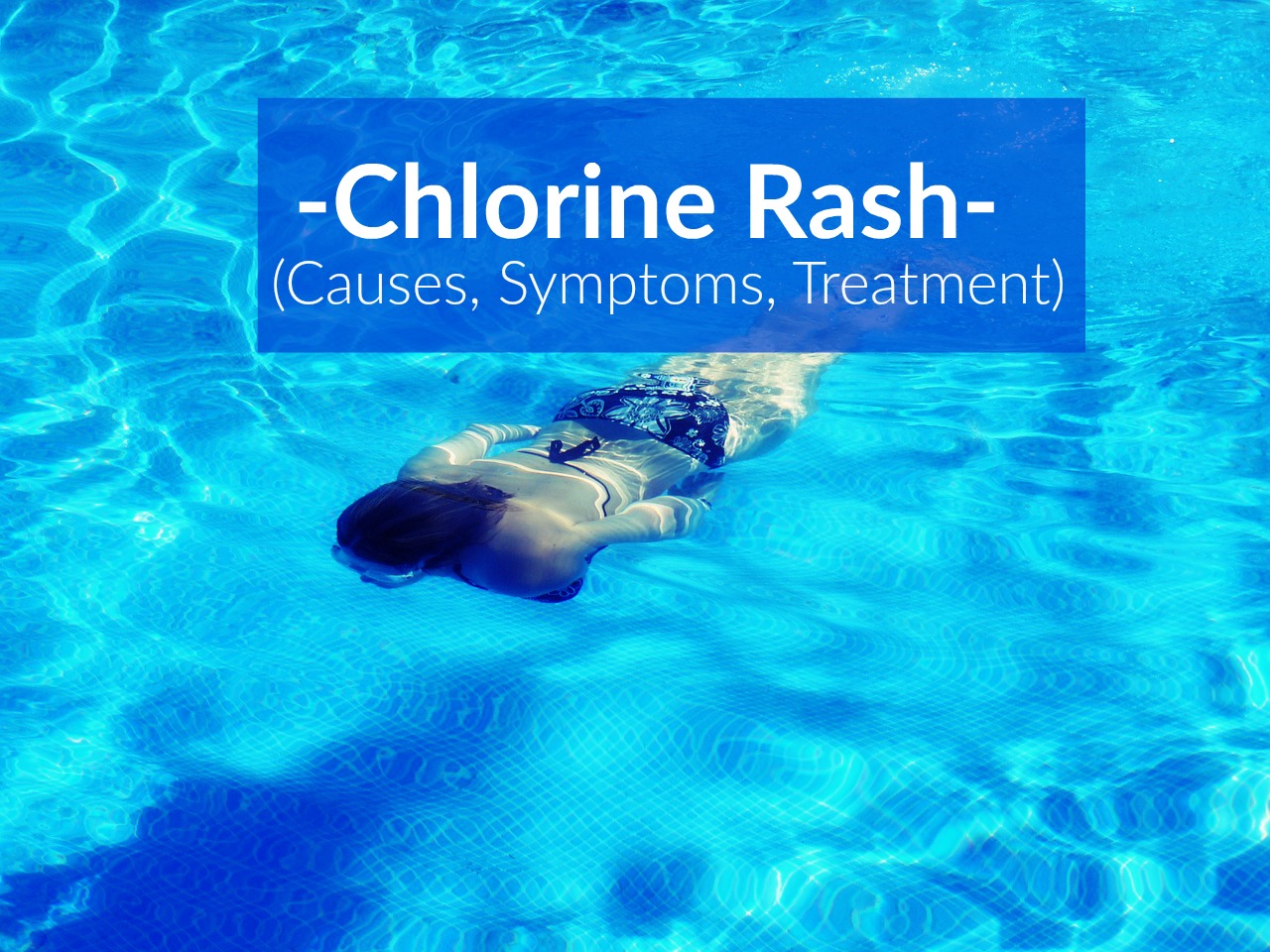The skin is the largest organ of the human body.(1)
It’s also one that, when uncomfortable, can make your entire day just awful.
Facts about the skin (2)
• protects most of the body’s other vital organs
• helps to regulate body temperature
• manufactures Vitamin D
• covers your whole body (approximately 19-20 square feet)
Avoiding skin problems is everyone’s goal, but what about when you’re not able to do so? Sometimes normal day to day events can cause a problem with the skin that you are not expecting.
Itchy, dry and cracking red skin is a problem. The skin rash sufferer will do anything that it takes to make it go away.
The first step in doing that is usually to figure out what caused it. Once you’ve done so, you can figure out what you’ll have to do to prevent it or to treat it.
What is Chlorine Rash?
Also known as swimmers itch, swimming pool rash or chlorine rash there are multiple types of rash that fit into this group and they may be caused by many different agents.
In fact, several things are called swimmer’s itch and those things are caused by different types of problems– some of them the exact opposite of exposure to chlorine–but instead the lack of chlorine in the pool may be problematic too.
pH and Chlorine
The best way to get rid of the bad bacteria in a swimming pool is by adjusting both chlorine and pH levels.
pH is important because if pH goes up, the ability of chlorine to kill bacteria in water goes down.
According to Centers for Disease Control and Prevention “a swimmer’s body has a pH between 7.2 – 7.8 so if the pool water isn’t kept in this range then swimmers will start to feel irritation of their eyes and skin”.(3)

What Causes Swimming Pool or Chlorine Rash?
The first causative factor is, as the name implies, chlorine!
Chlorine is a yellowy-green dense gas, discovered in 1774 by Carl Wilhelm Scheele.(4)
Chlorine is a necessary part of swimming pools and hot tubs. It’s used to kill the bacteria that is always present in public pools.(4)
Having a lot of chlorine in the swimming pool or the hot tub can cause real problems for people who are sensitive to it.
According to allergists it is a reaction to chlorine.
Dr. Zoltan P. Rona, MD MSc for Health101 stated that: ” Numerous scientific studies, however, report that chlorinated tap water is a skin irritant and can be associated with rashes.” (5)
What Can It Do To Us – Potential Health Issues
Conditions contributed to or aggravated by chlorine exposure:(6)
» Respiratory Conditions
» Dry Hair, dandruff,
» Eye conditions
» Itchy dry skin
According to chlorinekills “majority of our daily chlorine exposure is from showering. Chlorine is not only absorbed through the skin, but also re-vaporized in the shower, inhaled into the lungs, and transferred directly into the blood system.” (6)
Chlorine happens to be an irritant to skin and scalp and may cause problems for the swimmer. If the strength is excessive or the person is exposed to it repeatedly over the course of several days, a chlorine rash or chlorine itch may take place.
The second and perhaps the most unusual type of chlorine rash or swimming pool rash may not be caused by excessive chlorine, but conversely, may be caused by not adding enough chlorine in the water.
That makes pools more prone to bacteria buildup (such as pseudomonas aeruginosa) that can lead to ear infections (especially in infants and children), and other more generalized skin rashes.(7)
That too creates a problem and must be treated differently than the chlorine or swimming pool rash that comes from excessive exposure to chlorine in the water.
Several different types of chlorine rash or swimming pool rash exist which means that there will be multiple types of symptoms and there may be multiple types of treatment necessary in order to assure that it gets better and the itching goes away quickly.
What are the Symptoms of Swimming Pool Rash?
When you’re affected by swimming pool rash, one of the first things that people say that you will feel is an itching and burning from the rash.
It will begin to raise up into itchy bumps in a relatively short time (condition arises within hours) but also can be a few days after you’ve been affected by it. (8,9,10)
Bear in mind that every person who has it will be affected differently and no two rashes will look exactly the same.
If you and your sibling have a swimming pool or chlorine rash it may look identical or it may look completely different so don’t go by appearance alone, but add up all of the factors in order to determine what is causing the rash.
It looks like raised bumps and they may have fluid. Some look very much like contact dermatitis. The different types of chlorine rash can appear differently and it will affect different people different ways.
Most people affected by swimming pool rash state that the burning and the itching is the first and the most difficult to bear symptom, but that when the small blisters raise up and break that is quite painful if the rash takes that form.
Treatment of Chlorine Rash
According to physicians and nurse practitioners, the treatment of the rash will be reliant upon the many different causes.
If the cause is the extra chlorine that has been touching the skin from multiple trips to the pool or to the spa or hot tub, the treatment will be to steer clear of the chlorine.
Ointments may be used to soothe the itch and to prevent scratching so that the patient doesn’t get an infection.
In most cases the rash will clear up on its own within two weeks. This is if the rash does not cause any type of infection.
According to a study by The U.S. Department of Agriculture (USDA) Vitamin C effectively neutralizes chlorine so use of topical vitamin C spray could help to remove the chlorinated stuff.(11)
In some cases, swimming pool rash is caused by the bacteria in the pool because not enough chlorine has been used.
When this is the case the treatment may be different.
It may require antibiotics to get rid of the rash because when swimming pool rash or chlorine rash has been caused by a lack of chlorine, it typically means that you’ve gotten a rash due to bacteria in the water to which you were exposed.
In such cases, treatment is usually topical antibiotics, systemic antibiotics if the rash is badly infected and requires an antibiotic treatment to clear up the rash;(12,13)
• Gentamicin cream
• Polymyxin B spray
• Oral ciprofloxacin
• Ceftazidime
• Aminoglycosides
• Cefepime
• Aztreonam
• Carbapenems
• Ticarcillin
• Ureidopenicillins
In either case, whether the causative agent is the swimming pool’s chlorine or whether it has been caused by the lack of chlorine and exposure to bacteria, the person who is suffering from the rash is advised to stay away from the swimming pool or the hot tub.
Additional Tips
Chlorine is excellent at sanitizing pools but can be harsh for your skin.
In order to prevent the issues there are some other tips that are given to sufferers of swimmers rash or chlorine rash.(3, 14,15)
» Be certain that you use only the proper amount of chlorine in order to keep the bacterial levels low while preventing the skin damage that can take place from excessive chlorine.( chlorine levels recommended by the health department are between 1.0 – 3.0 ppm).
» Test the chlorine levels and the ph levels in the pool or hot tub regularly to ensure that those who have sensitive skin are not harmed by the pool.
» Take shower before and after each and every swim (use an antibacterial soap)
» Use public pools that maintain a record of pH levels
» Use specially designed rubber pants for children that prevent them from urinating in the water and helps to keep the water clear of bacteria.
» Apply special pre-swim lotion designed to prevent chlorine rash (check price on Amazon)
» Use topical vitamin C spray after swim (check prine on Amazon)
» Remove and wash the swimsuit when you come out of the water
» If you soap and water aren’t sufficient you should hit the sauna (sweating brings out the chlorine smell)
Conclusion
No matter how you slice it, swimming pool rash or chlorine rash is no picnic.
It will often clear up on its own, but be very careful to monitor for signs of infection, take preventive measures and always consult a qualified medical professional.
Read more
References
(1)http://science.nationalgeographic.co.uk/science/health-and-human-body/human-body/skin-article/
(2)http://www.americanskin.org/resource/
(3)http://www.cdc.gov/healthywater/swimming/pools/disinfection-team-chlorine-ph.html
(4)http://www.rsc.org/periodic-table/element/17/chlorine
(5)http://health101.org/art_chlorine.htm
(6)http://www.chlorinekills.com/
(7)http://www.cdc.gov/hai/organisms/pseudomonas.html
(8)http://acaai.org/allergies/types/allergy-myths/chlorine-allergy
(9)http://www.webmd.com/skin-problems-and-treatments/news/20001207/dermatitis-hotel-hot-tubs-and-pools
(10)http://www.dermnetnz.org/acne/spapool-folliculitis.html
(11)http://www.fs.fed.us/t-d/pubs/html/05231301/05231301.html
(12)http://www.dermnetnz.org/acne/spapool-folliculitis.html
(13)http://www.ncbi.nlm.nih.gov/pmc/articles/PMC2772362/
(14)http://allergies.ygoy.com/2011/04/28/what-is-chlorine-rash/
(15)https://www.quora.com/How-do-I-get-rid-of-chlorine-after-swimming
Leave Feedback: Was this article helpful?

